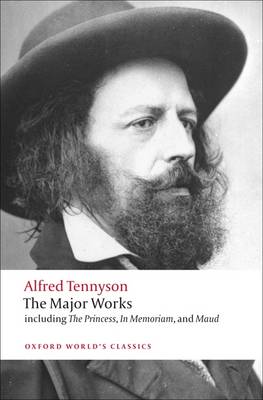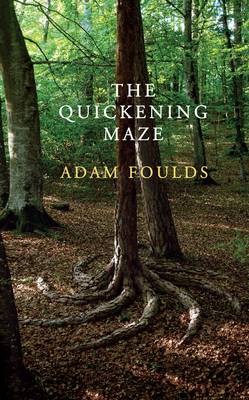These are among the things required of a reader: Patience. A willing suspension of disbelief. Time. The withholding of judgment (at least for awhile).
I brought these things to Adam Foulds'
The Quickening Maze. I also brought the elevated expectations that I associate with Man Booker Prize finalists, not to mention my interest in insanity and asylums. I felt at home within the very first pages. Foulds' prologue sings; it augurs:
He'd been sent out to pick firewood from the forest, sticks and timbers wrenched loose in the storm. Light met him as he stepped outside, the living day met him with its details, the scuffling blackbird that had its nest in their apple tree.It was after that that I lost and never did quite regain my footing in this historical novel purportedly about John Clare, the nature poet, and his time (1837) at an asylum called High Beach. The story has all the makings of greatness—appearances by the poet Alfred Tennyson (who lives nearby because his melancholic brother has been committed), tangents involving forest-inhabiting gypsies, a population of mentally ill and delusional patients, a lonely teen girl and her too-beautiful friend, the wrongly committed and the wrongly empowered, and a starring role by Matthew Allen, who owns the asylum and dabbles in impossible industrial ventures. Though billed as a novel about John Clare "and his vertiginous fall into madness," we see about as much of him as we do the other members of this sprawling cast, and therein, I think, lies the problem. So much cutting in and out within the confines of a relatively short book diffuses, so that what might have a deeply engaging story—a story of a man losing, finding, losing himself—becomes a puzzle of too-many parts, forcing the reader (this reader) to focus primarily on the mapping of characters as opposed to Clare's internal combustion.
I struggled, in other words, to suspend my disbelief. I struggled to believe in these characters as people. I found myself thinking far more about the mechanics of the novel—about how it had been made, about novelistic
choices. With the important exception of the prologue, which is gorgeous, I was also far too aware, all the way through, that I was reading, by which I mean: I kept studying the composition of the sentences, rather than losing myself to their sense or meaning.
I am—of course—in the minority with this, and every book has its right and proper audience. Let me hasten to say, finally, that I will absolutely read another Foulds title, for his talent intrigues, as does his capacity to locate a truly interesting place and time in history.
Because Lilian Nattel is a very brilliant author and reader, I trust her, and when
she sang the praises of Adam Foulds'
The Quickening Maze back in late June, I knew I'd be reading the book sooner than later. And when the dear and deep and perpetually risk-taking
Elizabeth Hand wrote (long before the National Book Award list had been unveiled) that I absolutely had to read
Just Kids by Patti Smith (she'd
reviewed it for the
Washington Post), I said,
All right, Liz. I will.Yesterday, released for the afternoon from client work, I headed to the
Chester County Book & Music Company, which is another version of paradise on earth. We're talking an indie book store here that feels a city block deep, and those who work there stack their favorite reads up and down end shelves. I get lost there, and I don't mind one bit.
This afternoon, I board a plane. Smith's coming with me. So is Foulds.

Adam Roberts is Professor of Nineteenth-Century Literature at Royal Holloway, University of London, as well as a science fiction novelist. He is the editor of Tennyson: the Major Works, which was recently published in the Oxford World’s Classics series. In the original post below, he reviews the Booker shortlisted novel The Quickening Maze, by Adam Foulds, which features Tennyson as a main character.
If you’d like to read more by Adam Roberts, he also writes for literary blog, The Valve.
I picked up Adam Foulds’ excellent new novel The Quickening Maze (it has, as I’m sure you know, been shortlisted for this year’s Booker Prize) with more than an ordinary reader’s interest. You see, this scrupulously researched historical novel takes Alfred Tennyson as one of the main characters; and I, as the editor of Tennyson: the Major Works, was curious as to how Foulds treats him.
 I was not disappointed. The Quickening Maze is, throughout, a beautifully written fiction: set in 1840 and centred on the lunatic asylum run by Dr Matthew Allen on the outskirts of Epping Forest, the novel evokes its world with a poet’s eye and skill at phrasing—indeed the book is as much about poetry, or poetic perception, as it is about a series of events. The point-of-view shifts deftly between all the main characters, including a number of the inmates at the asylum; although the peasant poet, John Clare, is the main focus. A patient in Allen’s asylum, his sanity is precarious at the beginning of the tale and becomes less stable as it goes on. Fould’s vivid, precise way with poetic image, and his exquisite control of language, brilliantly evoke the world through Clare’s hyper-sensitive eyes.
I was not disappointed. The Quickening Maze is, throughout, a beautifully written fiction: set in 1840 and centred on the lunatic asylum run by Dr Matthew Allen on the outskirts of Epping Forest, the novel evokes its world with a poet’s eye and skill at phrasing—indeed the book is as much about poetry, or poetic perception, as it is about a series of events. The point-of-view shifts deftly between all the main characters, including a number of the inmates at the asylum; although the peasant poet, John Clare, is the main focus. A patient in Allen’s asylum, his sanity is precarious at the beginning of the tale and becomes less stable as it goes on. Fould’s vivid, precise way with poetic image, and his exquisite control of language, brilliantly evoke the world through Clare’s hyper-sensitive eyes.
But Tennyson has a large part to play too. He comes into the story as he oversees the admittance of his brother Septimus (suffering from the melancholic ‘black blood’ of the Tennysons) to the asylum, living there for nearly three years. Dr Allen befriends Tennyson, and persuades him to invest in his idea for an automated wood-lathe—in fact Tennyson put almost all the money he had, £3000, into this scheme, only to lose it all. The doctor’s pale, bookish daughter Hannah falls hopelessly in love with Tennyson, although the emotion is not reciprocated.
Foulds has certainly done his research. He credits Robert Bernard Martin’s dependable biography Tennyson: the Unquiet Heart in his acknowledgments, but I take this to be modest understatement on his part; because one thing that emerges from this book is how well Foulds knows his pre-1840s Tennyson. I’ll give a few examples. Early in the book Tennyson talks philosophy with Allen, who believes in a ‘Grand Agent’ behind the phenomena of reality: ‘a common cause, a unitary force.’ Tennyson concurs.
“I see. A Spinozism, of sorts.” And Tennyson did see: a white fabric, candescent, pure, flowing through itself, surging,  charged, unlimited. And in the world the flourishing of forms, their convulsions: upward thrive of trees, sea waves, the mathematical toy of sea shells, the flight of dragonflies. [25]
charged, unlimited. And in the world the flourishing of forms, their convulsions: upward thrive of trees, sea waves, the mathematical toy of sea shells, the flight of dragonflies. [25]
This is nicely done; and if the reader of Tennyson recognises the sea-shell from Maud, the dragonfly from ‘The Two Voices’ it only contributes to the effect. Fould’s Tennyson goes on more specifically:
“As a boy I could put myself into a trance by repeating my name over and over until my sense of identity was quite dissolved. What I was then was a being somehow merging, or sustained, with a greater thing, truly vast. It was abstract, warm, featureless and frightful.” [The Quickening Maze, p.26]
This speech has been lifted from a letter Tennyson wrote (late in his life—in 1874) to an American mystic and writer Benjamin Paul Flood. Flood, it seems, believed it was possible to enter a spiritual trance state via the newly discovered medical technologies of anasthesia. Tennyson wrote:
I have never had any revelations through anaesthetics: but “ a kind of waking trance” (this for lack of a better word) I have frequently had quite up from boyhood. When I have been all alone. This has often come upon me through repeating my own name to myself silently, till all at once as it were out of the intensity of the consciousness of individuality the individuality itself seemed to dissolve and fade away into boundless being—and this not a confused state but the clearest of the clearest, the surest of the surest, utterly beyond words—where Death was an almost laughable impossibility—the loss of personality (if so it were) seeming no extinction but the only true life. [Tennyson: the Major Works, p.520]
What interests me here is how Foulds have adapted this famous self-description for the purposes of his novel: Tennyson’s actual 1874 account is surprisingly reassuring about this strange fugue state, and wholly positive: ‘not a confused state but the clearest of the clearest … Death was an almost laughable impossibility … no extinction but the only true life’. In the novel, though, it becomes something rather more unnerving: ‘abstract, featureless and frightful’—because The Quickening Maze’s main focus is on madness, on that breakdown of coherent consciousness and its fearful consequences.
‘May I ask you, what is your opinion of Lord Byron’s poetry?’ Hannah, the doctor’s daughter enquires later on in the narrative Tennyson replies:
I remember when he died. I was a lad. I walked out into the woods full of distress at the news. It was the thought of all he hadn’t written, all bright inside him, being lost for ever, lowered into the darkness for eternity. I was most gloomy and despondent. I scratched his name onto a rock, a sandstone rock. It must still be there, I should think. [The Quickening Maze, pp.102-3]
The original for this is a conversation Tennyson had late in life with his son, Hallam.
We talked of Byron and Wordsworth. “Of course,” said Tennyson, “Byron’s merits are all on the surface. This is not the case with Wordsworth. You must love Wordsworth ere he will seem worthy of your love. As a boy I was an enormous admirer of Byron, so much so that I got a surfeit of him, and now I cannot read him as I should like to do. I was fourteen when I heard of his death. It seemed an awful calamity; I remember I rushed out of doors, sat down by myself, shouted aloud, and wrote on the sandstone: “Byron is dead!” [Tennyson: the Major Works, p.541]
Once again Foulds has done something interesting with his source material. The substance of the recollection is the same, but where Tennyson’s original account is a cathartic outpouring—he ‘rushed out of doors’ at the news, ‘shouted aloud’ and wrote on rock to express himself—Foulds internalises the grief. His Tennyson is filled, even glutted, with a grief that is inside: he goes ‘into the woods’; he is ‘full of distress’ at ‘the thought of all he hadn’t written, all bright inside him.’ This interiorisation of experience is one of the main thrusts of the novel. Foulds’ characters all inhabit their subjectivities much more than they live in the world, some to the point of monomaniac madness. The exception also proves the rule: Clare, whose perceptions of the natural world around him furnish the novel with some of its most beautiful moments, cannot escape his own imprisoning imagination. He sinks into a grief-filled interiority—even believing himself to be Lord Byron himself—for he has been unable to cope with the death of his childhood sweetheart Mary, and the fantasy of her being alive again overwhelms him.
The parallels with Tennyson are unobtrusively drawn: in 1840 he was also sunk in grief, at the premature death (in 1833) of his friend Arthur Henry Hallam. Foulds’ Tennyson reverts to memories of Hallam time and again, and across the course of the novel he is writing the elegiac lyrics that were later collected into Tennyson’s most famous poem, ‘In Memoriam A. H. H.’ Foulds quotes the ninth:
Fair ship, that from the Italian shore
Sailest the placid ocean-plains
With my lost Arthur’s loved remains,
Spread thy full wings, and waft him o’er.
So draw him home to those that mourn
In vain; a favourable speed
Ruffle thy mirror’d mast, and lead
Thro’ prosperous floods his holy urn.
All night no ruder air perplex
Thy sliding keel, till Phosphor, bright
As our pure love, thro’ early light
Shall glimmer on the dewy decks.
Sphere all your lights around, above;
Sleep, gentle heavens, before the prow;
Sleep, gentle winds, as he sleeps now,
My Friend, the brother of my love;
My Arthur, whom I shall not see
Till all my widow’d race be run;
Dear as the mother to the son,
More than my brothers are to me. [The Quickening Maze, pp. 107-8; Tennyson: the Major Works, p.209]
That Tennyson is sane, and Clare mad, has as much to do with the different emphases of their imaginative engagements with mourning. Tennyson styles himself, patiently, as Arthur’s ‘widow’, in the last stanza there; a feminisation that Foulds develops in his fictional recreation of the poet’s personality. Clare, on the other hand, chafes against his restrains. He believes himself a famous pugilist, and fights with the asylum’s warders and with local gypsies. He roams restlessly through Epping forest, and—in a superb passage at he novel’s end—walks all the way back to his home village, a journey of 80 miles or more, overcoming the obstacles placed in his way, landscape, hunger and weakness. By comparison Tennyson moves smoothly: Foulds captures well his stillness and inwardness, his silences, the way he draws things into himself—not least, tobacco smoke (Allen “watched Tennyson relight his pipe, hollowing his clean-shaven cheeks as he plucked the flame upside down into the bowl of scorched tobacco’ [23]”). In all, it’s very deftly and sensitively done. The novel is highly recommended.








 I was not disappointed.
I was not disappointed.  charged, unlimited. And in the world the flourishing of forms, their convulsions: upward thrive of trees, sea waves, the mathematical toy of sea shells, the flight of dragonflies. [25]
charged, unlimited. And in the world the flourishing of forms, their convulsions: upward thrive of trees, sea waves, the mathematical toy of sea shells, the flight of dragonflies. [25]
How interesting Beth. It's wonderful that there are so many books because what is treasure for one reader isn't for another.
It's frustrating when a book doesn't quite work for you. Still, the extract you shared is beautiful.